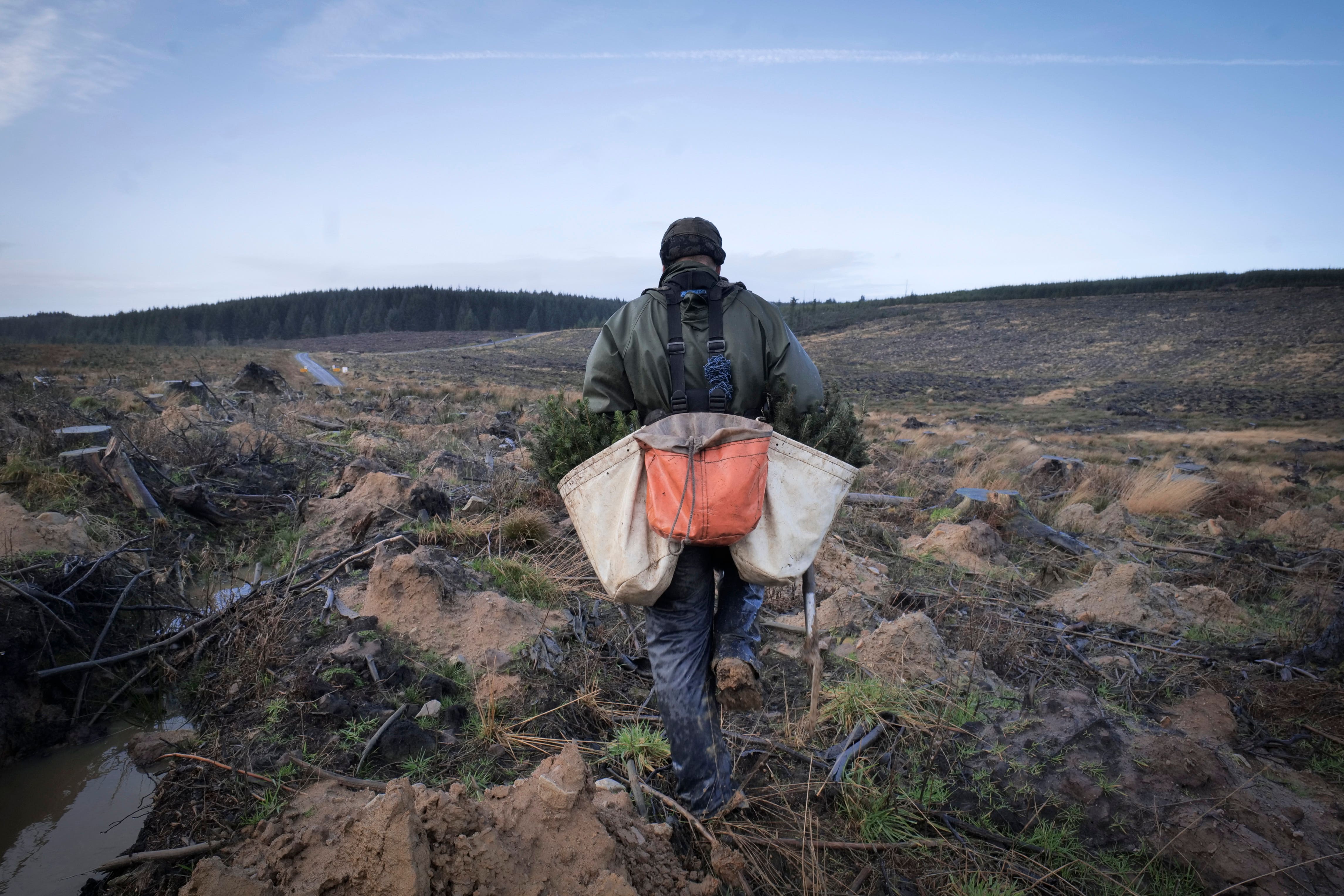Forestry workers in race to plant 3.5m trees before spring
The project is part of Forestry England’s latest planting programme to replenish tree stocks, bolster broadleaf cover and encourage biodiversity.

Your support helps us to tell the story
From reproductive rights to climate change to Big Tech, The Independent is on the ground when the story is developing. Whether it's investigating the financials of Elon Musk's pro-Trump PAC or producing our latest documentary, 'The A Word', which shines a light on the American women fighting for reproductive rights, we know how important it is to parse out the facts from the messaging.
At such a critical moment in US history, we need reporters on the ground. Your donation allows us to keep sending journalists to speak to both sides of the story.
The Independent is trusted by Americans across the entire political spectrum. And unlike many other quality news outlets, we choose not to lock Americans out of our reporting and analysis with paywalls. We believe quality journalism should be available to everyone, paid for by those who can afford it.
Your support makes all the difference.Forestry workers across northern England are in a race against time to plant 3.5 million trees by hand before spring gets under way.
The project is part of Forestry England’s latest planting programme to replenish tree stocks, bolster broadleaf cover and encourage biodiversity.
England’s biggest woodland, the 63,000 hectare Kielder Forest in Northumberland, is the site of most of the project, with three million seedlings planted.
It will have around 50 species, with almost a third of them being broadleaf varieties such as oak, birch and rowan.
The remainder will be conifers like Sitka spruce which is the main crop of the UK’s timber industry.
They will be planted in around 1,200 hectares – the size of 1,700 football fields.
While much of the industry is mechanised, hand-planting is said to give trees the best start in life and an experienced worker can plant 2,000 trees a day in good conditions.
And the clock is ticking, as the young trees will become stressed if they are not planted before April when temperatures rise.
Kielder Forest alone produces about 25% of all the timber grown in England so it's a key asset, but it’s also become a huge haven for wildlife
Climate change has meant experts source seeds from lower latitudes and milder climates so they are used to warmer temperatures.
And milder springs have brought forward the planting season.
Richard Cooper from Forestry England said: “Restocking is a huge effort packed into a small amount of time.
“But it gives us a chance to shape the forest for the next 50 years.
“When restocking sites, we leave at least quarter of the land either as open habitat, plant with alternative conifers other than Sitka spruce or with native species.
This annual cycle of harvesting and planting ensures we contribute to the UK’s massive demand for timber and wood products. But it also supports the ongoing evolution of the nation’s forests to ensure their relevance to climate change, biodiversity decline and health and well-being
“Kielder Forest alone produces about 25% of all the timber grown in England so it’s a key asset, but it’s also become a huge haven for wildlife.
“In places, species selection is very much influenced by the presence of wildlife like red squirrels.”
Kevin May, forest management director, said: “This annual cycle of harvesting and planting ensures we contribute to the UK’s massive demand for timber and wood products.
“But it also supports the ongoing evolution of the nation’s forests to ensure their relevance to climate change, biodiversity decline and health and well-being.”
Areas cleared by Storm Arwen’s devastating winds in November 2012 will not be restocked yet, as experts say it is best to leave them as they are for 18 months at least.
Some fallen trees will be left to provide habitats for insects and fungi.